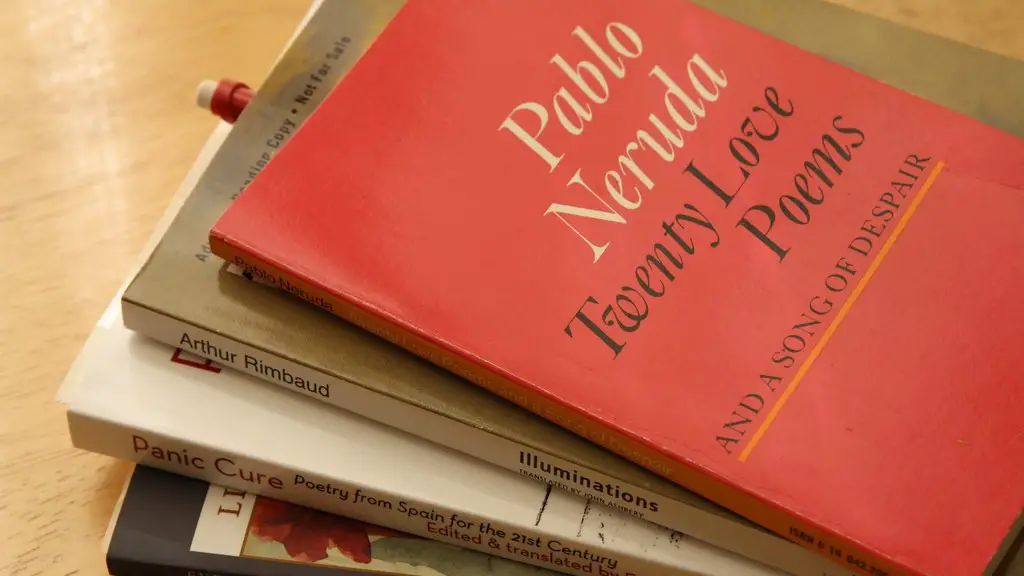Writing a poetry anthology can be a daunting yet enjoyable task. As a poet, it is important to be able to showcase your work in an organized way to improve readability and demonstrate your skills. Writing an anthology also helps form a reference and record of your journey in poetry, showing your progress and growth. Here are some key tips for how to write a poetry anthology, whether it is for personal display or for academic use.
Select poems for the anthology
Choose poems that you consider to be your best work. You do not need to include all your work, as this would create an unwieldy and tedious collection. As you choose and arrange the poems, think carefully about your overall theme, genre, mood and poetic style.
You may also want to include work of other poets alongside yours, to create a broader anthology. Choose carefully and be selective in your approach.This is a great way to acknowledge the influence of other poets who have inspired you, or to display poems within a certain literary tradition.
Write an introduction
A short introduction of maximum 500 words at the beginning of the anthology gives your workcontext and importance. Explain why you are writing the anthology, what your personal and poetic journey has been like, and the themes and traditional that your anthology focuses on.
Include the title of your collection and signpost the layout of your anthology. Through the introduction, explain how the collection is organized and explain any anecdotes or extrainformation you may have about the specific poems you have chosen.
Choose an arrangement
Choose one of the most popular arrangements for poem collections,which are chronological, thematic, or stylistic. Chronological arrangementsbegin with the oldest poems and work forwards to the most recent ones,which helps the reader follow your poetic development over time. Thematicapproaches separate the poems into groups based on the topics that youwould like to discuss, such as nature, loss, or love. A stylistic approachfocuses on the sound, rhythm and meter of the poem, as well as how thepoetic language carries certain elements of emotion or imagery.
Edit your work carefully
Once you have selected the poems for your anthology and investigated thetypes of arrangement, let the poems rest for a couple of weeks or months.This period of time will help you read your poems with fresh eyes and allowyou to make any changes that you may deem necessary. Read your poemsaloud, as this will allow you to understand the sound and meaning moreclearly. If you find any errors in rhythm, meter, or imagery, make thechanges before submitting your work.
Include an index
At the back of the anthology, create an index where readers can quicklyaccess the poems in the collection. This can be organized alphabetically bythe poet’s name or by poem title, as well as by date or theme. An indexhelps readers to engage with your anthology more easily and gives thework more credibility.
Providing aesthetic to the text
The presentation of the anthology is just as important as its content. Inother words, you need to provide visual clues such as an ornate cover page,appropriate font and font size, page layout, page numbers, and margins.Consult with an editor or a graphic designer to create a unique look for youranthology and to make sure the aesthetic aspects of the text are noteworthy.
Copyright and upfront deals
As a poet, it is important to always think of the legal aspects and copyrightissues of the anthology. Your publisher, if any, may ask for completecopyright to the book, including all the manuscripts and their illustrations.It is important to educate yourself about the copyright, royalties, and otherfees associated with writing a poetry anthology. If you have any doubts, itis encouraged to hire a legal consultant to ensure that all relevant legislationis respected and that all your rights as a writer are acknowledged.
Marketing your anthology
For those who are publishing a poetry anthology, it is necessary to create aneffective marketing plan that includes social media campaigns, virtualbookstore visits, and on-ground events. A website or blog will be useful forclarifying important information about the anthology and for interacting withreadership or potential customers. In addition, contact bookstores and othermedia organizations avail discounts and special offers.
Understand the publishing process
Before submitting your poetry anthology, it is worthwhile to revise the text for clarity, aesthetic, anddiction. After that, you will need to identify potential publishers and contactthem with your manuscript. Each publisher’s submission process may bedifferent, so ensure that you understand the steps fully so that you cansubmit your work in an effective manner. During the process, the publishermay also ask for additional information such as the biography of the writer,testimonials, and a synopsis of the anthology.
Choose the right publisher
It is important to select a publisher who is familiar with your genre. Manysmall presses specialize in poetry and have an intimate understanding oftherelevant aesthetic and legalities. Large publishing houses tend to ask forspecial rights not only for the anthology but for the poet’s future works aswell. Choose a reputable publisher who can manage both the mechanical andpromotional aspects of the publishing process.
Explore self-publishing platforms
If you would like more control over the process and the rights to your work,self-publishing is an option. The internet has made it simpler to publishtexts online, and there are many online platforms that provide informationon how to self-publish. Choose the one that best suits your needs – whetherthat be popularity or originality – and invest the necessary time and resourceinto creating an anthology that you can be proud of.
Be creative but remain grounded
When writing a poetry anthology, it is important to remember that bigger doesnot necessarily equal better. Be creative and experienced, but do not forgetabout the fundamentals. Experiment with poetic forms, but keep it within thegeneral style that you have chosen. Make sure your arrangement reflects theoverall texture of the anthology, and consider your audience. Does theanthology offer something to them, or are you writing just for yourself?
Know when to stop
Finally, know when to stop editing and start promoting. A greatcollection of poetry is never produced overnight. Aim for understanding yourvision clearly and writing down the core concepts and themes so that youcan challenge yourself to make your dream a reality. If a poem does notfit with the anthology, let it go. With time and commitment, you can turnyour ideas into a great compilation that you can be proud of.




